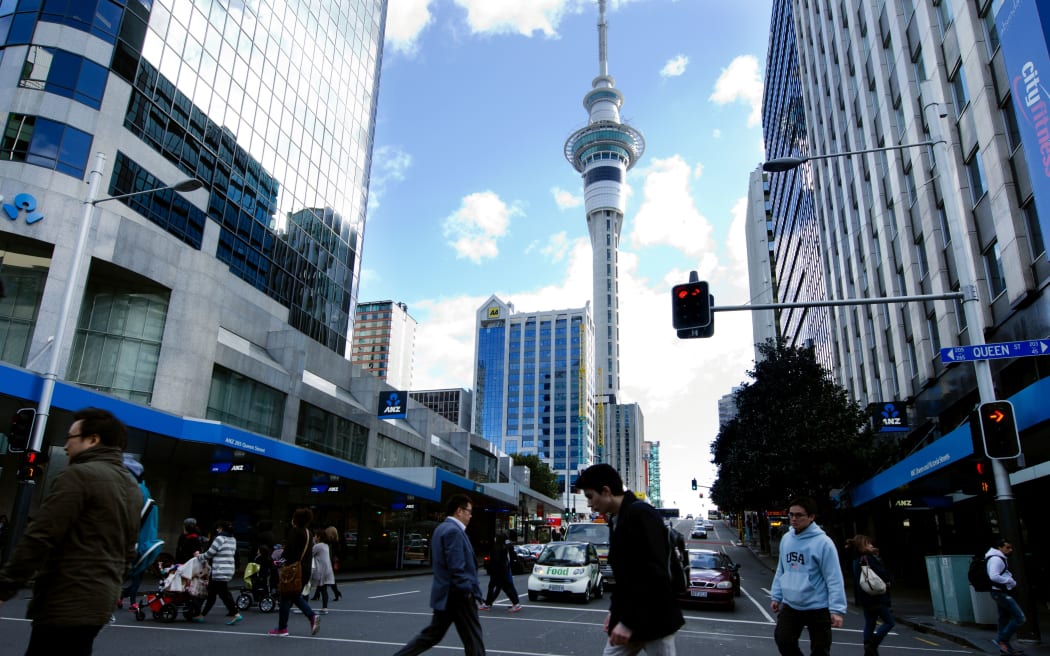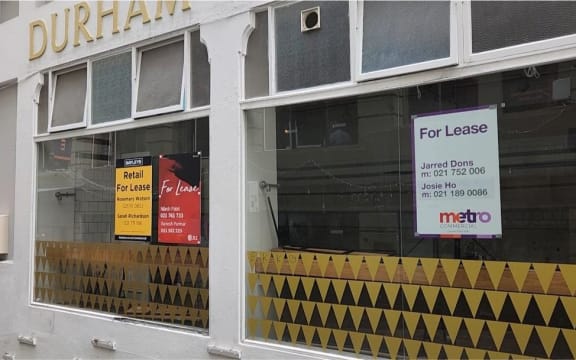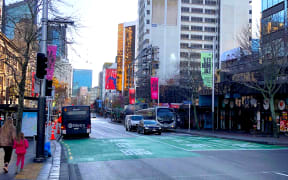
Photo: 123rf.com
Auckland's city centre has beaten New Zealand's economic growth for two years straight, but businesses in the area say they are still struggling to keep afloat.
The Infometrics Economic Profile for Auckland - released this afternoon by the city council - shows Auckland's CBD's economic growth hit 9.2 percent, reaching $30.4 billion in the year leading up to March 2023.
An increase in population saw 7.3 percent annual employment growth in the area, compared with national growth of 2.5 percent - making the CBD the largest employment hub in the country, with 157,500 jobs.
But businesses and shoppers around Queen Street said more needed to be done to bring people back to the CBD.
Roger Marbeck, the owner of Marbecks Records, said small businesses were still struggling with the lack of clients.
"I think the bottom-end retail, the 'little league' dealers, are still struggling.
"You'll find empty stores around the place, vacant stores that have never been filled, so it's very hard for them."
He said despite efforts, the number of people in the city centre was yet to reach pre-Covid-19 levels.
"I always remember many years ago, in the peak times, I think we had about 170,000 workers in the city, which is very high.
"We're probably about three-quarters of what we were pre-Covid, so we're not quite up to where we were before."

Photo: RNZ / Emma Stanford
Cliff used to live in the Auckland suburb of Papakura and said since he moved into the city, he did everything to avoid going to the CBD.
"I don't shop there anymore because of the traffic, the construction, the mess.
"I'll get all around the city to go somewhere else to shop, just to avoid the area. It became grim with time."
He said the difficulty of getting around was one of the main reasons people have left the CBD.
"I haven't seen many people around like we used to. The foot traffic is minimal, sometimes the pedestrian crosses are empty.
"I understand they are trying to design it to improve for pedestrians and they don't want cars in the city, but without cars we don't have people."
The data showed Auckland's CBD grow rate significantly outpaced the national average, which stood at 2.8 percent during the same period.
Auckland Council chief economist Gary Blick said the numbers were positive, but there was room for growth.
"History count data has made a good recovery, but it's still not quite at pre-pandemic levels.
"I think there has been some recovery, but it is still not quite back to where it was"
He said the city centre was overall heading in the right direction.
"The city centre is the primary commercial centre of the New Zealand economy, so it's good news for the whole country that growth in this highly productive location has been bouncing back after the challenges of the pandemic and its after-effects."
Auckland Council head of city centre programmes Jenny Larking said urban renewal projects would help ensure the city centre continued to thrive.
"We're making sure surrounding streets and spaces will be ready, underground infrastructure will have new capacity and greater resilience, businesses and residents will have a beautiful new backyard, and the area will be reflective of Tāmaki Makaurau with expressions of te ao Māori and references to the area's history throughout our landscaping and design."
Heart of the City's Viv Beck said many businesses were still finding things very difficult despite the overall positive news around the GDP.
"The thing to remember about the GDP is that the accommodation, food, retail, arts and recreational services represent a small percentage of the overall economic growth. They're the ones that were badly hit by Covid and many of them are still finding that difficult because they are reliant on foot traffic.
"It's been largely the professional service type organizations that have continued to flourish and that's continued as we've got things back open again."
She said the area was resilient and the completion of projects like the city rail link would offer hope for continued recovery.
"I think we've still got a challenge particularly around that midtown area where there's a lot of construction, so when that is done people will definitely find it easier to get around.
"We need to do everything that we can to just keep people coming back."




